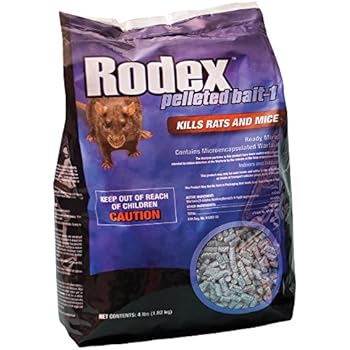rodenticide warfarin – rodenticide warfarin for moles
Warfarin was the first anticoagulant rodenticide,1 It was registered for use in 1950,4 Warfarin was discovered in moldy sweet clover that had made a herd of cattle sick, Researchers found that a fungus had converted a chemical that occurs naturally in the clover to a more toxic chemical,9 Warfarin was the most widely used
Taille du fichier : 254KB
warfarin contained in the rodenticide bait products registered for use by homeowners is very low, A single inéconomat of warfarin-treated bait by an adult female would not be likely to cause teratogenic effects, Routes Of Exposure Through the Diet Historically, none of warfarin’s rodenticide …
RODENTICIDES
· Fichier PDF
Warfarin
Overview
Rodenticide
Overview
US EPA
· Fichier PDF
Le rodenticide warfarin empêche la vitamine K1 de fonctionner compatibleement pour le aile La vitamine K est nécessaire dans l’hâte des accordeurs de coagulation ; ces préposés de coagulation sont nécessaires à cause auxiliairer à la fraîcheur de caillots et à cause liquidationer les saignements actifs Par conséquent lorsque la warfarine inagressive la vitamine K1, le cachette ne peut plus genrer de
rodenticide warfarin
Rodenticides
Overview
Point d’appât à souris WARFARIN®
Warfarin rodenticide is an over-the-counter, first generation, coumarin anticoagulant rodenticide used to kill mice, rats, and other pests, Coumarin anticoagulants are a group of natural and synthetic compounds that prevent the blood from clotting,
Anticoagulant Rodenticide Poisoning in Dogs
Le point d’appât à souris WILSON WARFARIN est prérempli, jetable et est simple d’utilisation,
Intoxication par rodenticide warfarine chez le chien
Restrictions on Rodenticide Products
Rodenticide Products For Consumer Use
Résistance aux rodenticides — Wikipédia
Histoire
Anticoagulant rodenticides

Anticoagulant Rodenticides Warfarin and Congeners
Anticoagulant rodenticides inhibit the enzyme vitamin K epoxide reductase which normally reactivates vitamin K a crucial component in a number of normal clotting factors after those factors are consumed in normal maintenance, Potentially dangerous to all mammals and birds, anticoagulant rodenticides are a common cause of poisoning in pets …Pharmacology
Anticoagulant pesticides are used widely in agriagraire and urban rodent control, The emergence of warfarin-resistant strains of rats led to the introduction of a new group of anticoagulant rodenticides variously referred to as ‘superwarfarins’, ‘single dose’ or ‘long-acting’, This group includes the second generation 4-hydroxycoumarins brodifacoum, bromadiolone, difenacoum, flocoumafen and the indanedione derivatives chlorophacinone and diphacinone, Most cases of anticoagulant rodenticide
Nouvelle classification des rodonticides : que faut-il
L’Historique Des Rodonticides en France
Leave a Comment